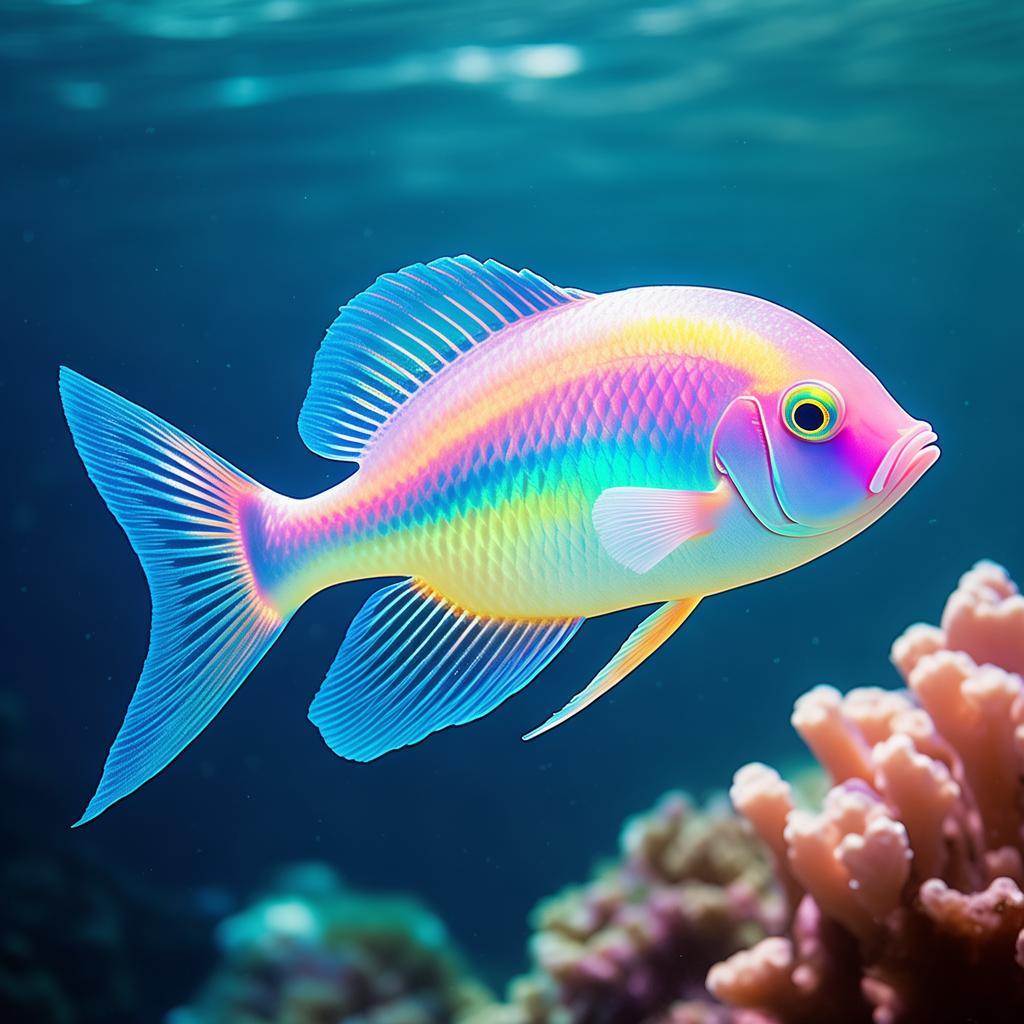Hey there, fellow pet enthusiasts! I'm thrilled to share some fascinating insights about the stunning卵形光鳃鱼, also known as the neon tetra. This vibrant little fish is not only a beloved addition to many aquarium collections but also a species that holds a lot of interesting facts and care tips. Whether you're a seasoned aquarist or just starting your journey into fishkeeping, I hope this guide will help you understand and maintain a healthy environment for your卵形光鳃鱼.

In this article, we'll dive into the essential care requirements, diet suggestions, and some common challenges you might face with these colorful companions. So, grab your magnifying glass and let's get started!
First things first, understanding the habitat is crucial. Neon tetras thrive in smaller tanks, ideally between 20 and 40 gallons. They enjoy a well-maintained environment with a temperature range of 72-82°F (22-28°C) and a pH level between 6.0-7.2. Making sure your tank is clean and well-maintained is the foundation of a healthy ecosystem.
When it comes to feeding, their diet should consist mainly of high-quality fish food, especially those formulated for tropical freshwater fish. A balanced diet includes ingredients like frozen vegetables, brine shrimp, and algae. Feed your tetras small, frequent meals to prevent bloating and ensure they get the nutrients they need.
One of the common issues that new aquarists face is managing stress levels. Neon tetras can be sensitive to stressors such as changes in water quality, tank temperature, and enrichment activities. Providing a calm, stable environment with plenty of hiding spots and interactive toys can help reduce stress and promote overall well-being.
Now, let me share a personal story from my own experience with my first卵形光鳃鱼. A year ago, I bought a beautiful, vibrant male neon tetra from a local aquarium store. At first, everything seemed perfect. The fish was active, eating well, and swimming around his tank with abandon. However, within a few months, I noticed he seemed more lethargic and less interested in his normal activities. After some research, I discovered that he was dealing with a combination of stress from the new environment and possibly a minor illness.
I made some adjustments: I changed his diet to one that was richer in omega-3 fatty acids, added more hiding spots, and gently increased water quality checks. Within a couple of weeks, he began to perk up again, and eventually returned to his playful self. This experience made me realize the importance of being attentive to your fish's needs and being prepared to handle potential health issues promptly.
In conclusion, keeping卵形光鳃鱼 is a rewarding endeavor that requires attention to detail and a commitment to their well-being. By following these care guidelines and being vigilant about their health, you can enjoy the beauty and companionship of these incredible fish. Happy swimming!
内容《卵形光鳃鱼》可能来自AI生成或网友投稿,不代表全量百科立场。

